#CIRCA 510 B.C.
Text


AN ATTIC BLACK-FIGURED NECK-AMPHORA AND LID
CIRCA 510 B.C.
#AN ATTIC BLACK-FIGURED NECK-AMPHORA AND LID#CIRCA 510 B.C.#pottery#ancient pottery#ancient artifacts#archeology#archeolgst#history#history news#ancient history#ancient culture#ancient civilizations#ancient greece#greek history#greek art
461 notes
·
View notes
Photo




Attic Bilingual Hydria,
ATTRIBUTED TO THE ANTIMENES PAINTER (BLACK-FIGURE), PSIAX (RED-FIGURE) AND THE POTTER OF THE HYPSIS HYDRIA, CIRCA 520-510 B.C.
41,5 Cm High.
Courtesy: Christie’s
#art#design#vessel#archeology#antiquity#attic#bilingual#hudria#jar#water jar#style#painting#greec#greece
31 notes
·
View notes
Photo
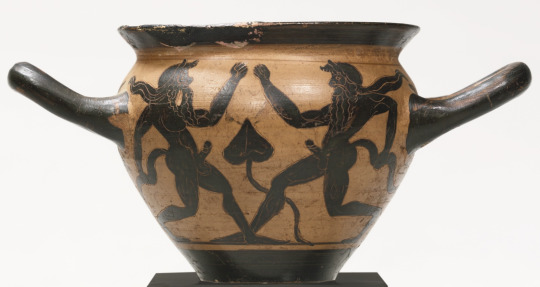
An Etruscan Black-figured Skyphos, circa 520-510 B.C.
Glazed terracotta
Sotheby’s
165 notes
·
View notes
Text


Ancient Greece as depicted in ‘Assassin’s Creed Odyssey ‘
The study of women in ancient Greece has historically been limited and scarce. Although, this situation began to change in the 1990s and with the rise of feminist movements. It was only then that scholars began to explore women who lived alongside men and were part of the ancient Greece society and economy.
There are a number of reasons for this overlook. For instance, some scholars believe that women were not studied because scholars had not thought of them as worth looking for (Morris, 1998, p.193). It is an inevitable fact that men had higher status in ancient Greece as well as more freedom and privileges as citizens than women who were often denied of equal opportunities. This difference in status and restrictions on women meant that women were also less likely to be the subject matter of an artist or craftsman’s object, unless they were goddesses who were important to Greeks’ faith and religious.This inadequate representation of women in general in ancient Greece in addition to limited number of archeological objects that remains today that could be properly analyzed led to this lack of scholarly study of ancient Greek women. Furthermore, some scholars believe that this underrepresentation was intentional.
“Women and slaves remain invisible not because of the inevitable methodological problems with attributing gender and legal status to excavated remains, but because Athenian male citizens wanted it that way.”
(Morris, 1998, p.220)
Regardless, there are still a number of archeological remains that could give us an idea on how women lived in ancient Greece. A great deal of our knowledge on ancient Greece women comes from illustrations done on household object such as vases. These illustration often tell a story or depict a specific scene and by analyzing them scholars are able to understand ancient people.
Below, we will take a look at some of these objects.

Name of object: Women at fountain house
Approximate date of object: ca. 510–500 B.C.
Material of object: Terracotta
Dimensions of object: H. 14 3/4 in. (37.5 cm)
Made in: Attica, Greece
Current Location: The Metropolitan Museum of Art
Significance of the object: This hydria (water jar) depicts a scene where a group of Athenian women are shown to be chatting while filling their hydrias. On the right of the scene, a woman is depicted while she is waiting by the fountain and filling her hydria with water. Behind her, four woman are depicted while they chat with each other. Two of the women are carrying their hydrias on their heads. The other two are using hand gestures while they chat with each other. Providing the daily supply of water was often a woman’s domestic duties in ancient Greece.

Name of object: Hydria with a scene at a fountain-house
Approximate date of object: 520BC-500BC
Material of object: Pottery
Dimensions of object: 50.80 cm
Findspot of object: Vulci, Italy
Made in: Attica, Greece
Current Location: The British Museum
Significance of the object: This hydria depicts a scene in which women are preparing for a ritual while getting water from the fountain-house. There are six women in total in this scene. On the far left and far right we see two women on each side carrying hydrias on their shoulders as they leave the fountain-house. In the centre of the scene we see a pilaster and two Ionic columns, above them a pediment. Behind the pillars, we have two other women drawing water from the fountain shaped like the head of lion, as they pour them into the hydrias. One of the most important role of women in Ancient Greece was preparing for and performing rituals. According to the British Museum, where this hydria is currently on display, the leafy branches that some of the figures in the painting appear to be carrying is often seen in religious contexts suggesting this is a scene from a ritual for the gods Hermes and Dionysos. This ritual known as Hydrophoria, would take place “on the second day of the spring festival of the Anthesteria, and involved the ceremonial pouring of water into a particular chasm.” (The British Museum).
There are a number of household remains that depict women near water fountains. According to The Metropolitan Museum of Art, where the first hydria is on display today, after Peisistratos and his sons changed and improved the water system of the ancient Athens, these type of depictions became more common. These fountains provided an opportunity for women to socialize with each other, update each other on recent events and gossips, and take a break outside from their domestic responsibilities at home.
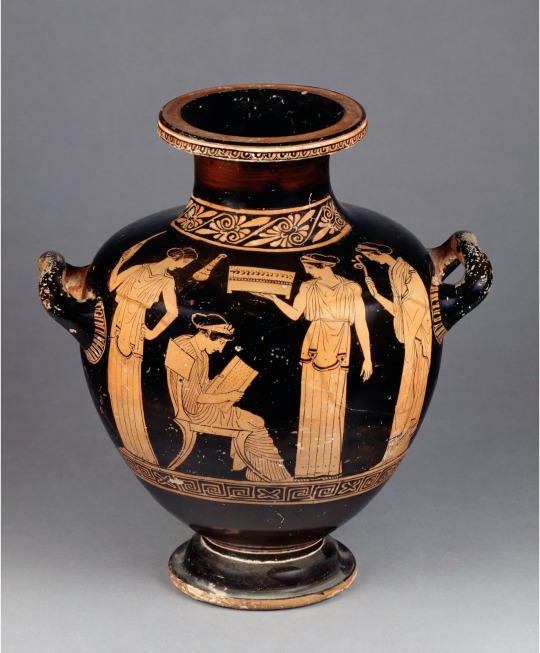
Name of object: Amphora likely depicting Sappho
Approximate date created: 450BC (circa)
Material of object: pottery
Made in: Attica (Greece)
Dimensions of object: 33.02 cm
Type: Hydria
Findspot: Kimissalla
Current Location: The British Museum
Significance of object: This hydria (water jug) depicts four women in a room. One of the women is shown to be seated and is reading a scroll. The three other women appear to be attending her. The attendant on the left is shown to be standing with her left arm on her hip, her gaze down at the seating women, and her right arm holding an object that looks like a spindle flask. The women on the right also have their eyes down at the seating women. One of the women is holding a box and the other is holding what appears to be a flower.
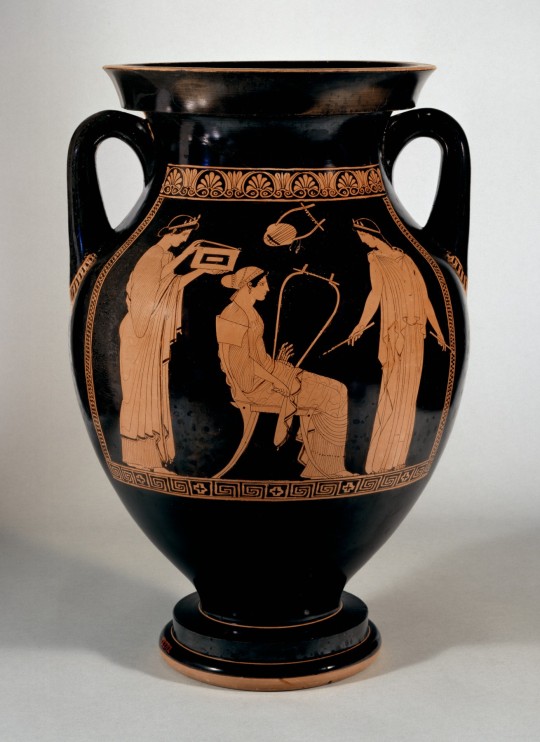
Name of Object: Red-Figure Amphora with Musical Scene
Approximate Date Created: 460-450 BC (Classical Greece)
Material: terracotta
Dimensions: 44.7 cm
Type: amphorae
Object Findspot: Attica, Greece
Current Location: The Walters Art Museum
Significance of object: This amphorae (ancient Greece jar with two handles and a narrow neck) is the work of a prominent painter known as the Niobid Painter (named after his most famous vase). It depicts three affluent Athenian women whom appear to be playing musical instruments. According to the Walter’s Art Museum where this amphorae currently has been placed, the women appear to be wearing the attire of maenads, the female followers of Dionysus' cult (also known as Bacchus). The woman on the right appears to be holding double flutes while the woman in the middle is sitting on a chair and holding a barbiton (a stringed instrument). The third woman on the left appears to be opening a box. On the background we see a lyre (small u-shaped harp used in ancient Greece) hanging above them. This is one of the important pieces of art that remains today and could tell us how the ancient Greece women lived and spent their leisurely times.


Name of Object: Attic Black-Figure Mastos (Side A and B)
Approximate Date Created: 520–500 B.C
Material: terracotta
Dimensions: 12.1 × 20.5 × 13.3 cm
Type: Mastos
Object Findspot: Athens, Greece
Current Location: The J. Paul Getty Museum
Significance of object: The side A of this Mastos (drinking vessel shaped like a women’s breast), depicts a young woman who is playing a double flute. The Side B view, depicts another women dancing while holding a branch and an ivy spring. According to The J. Paul Getty Museum, these attributes as well as their attire which is made of animal skin indicates that they are maenads, female followers of Dionysos (the god of wine). The Mastos were rare type of pottery that were only produced in Athens in the late 500s B.C. and were meant to be used at a symposium (aristocratic male drinking party).Since the nipple did not provide a support for the cup to be put down on the table, the wine had to be consumed all at once.

Name of object: Cup with a Woman Drinking in a Storeroom
Approximate Date Created:460–450 B.C.
Location Created: Athens, Greece
Material of the object: Terracotta
Dimensions: 15.3 × 27.5 × 17.9 cm
Type: Skyphos
Current Location: The J. Paul Getty Museum
Significance of object: This skyphos (a two-handled deep wine-cup) depicts a scene from the daily life of two Athenian women. On the front, an older woman is depicted while she drinks wine from a skyphos. She appears to be out of balance and perhaps drunk. She is unattractive with a misshaped neck. On the left, another younger girl, perhaps a servant, is depicted while she holds a wineskin on her shoulders and carries a jug. According to the J. Paul Getty Museum, where this skyphos is currently on display, aristocratic women in ancient Athens were forbidden from drinking wine and getting drunk as it may have led them to commit adultery or may have harmed their babies. Such bans would have been lifted past child-bearing age. Therefore, this is an unusual piece that remains today which could tell us about these women’s daily lives.
There are a number of vases, jars, cups, and other household objects that depict women playing musical instruments , reading books, drinking wine, or dancing around. These depictions tell us women in ancient Greece did have other hobbies and were involved in a variety of activities besides their domestic duties. Yet, some scholars believe that these portrayals should be treated with cautious because we do not have any testimonies from these women themselves and all we have are illustrations and writings made by men.
“Although some vase paintings depict a rather rosy picture of women reading, playing musical instruments, and dancing that challenge the more conventional view of women as repressed and uneducated, we cannot know how typical such scenes are of daily life.”
(Garland, 2008, p.84)
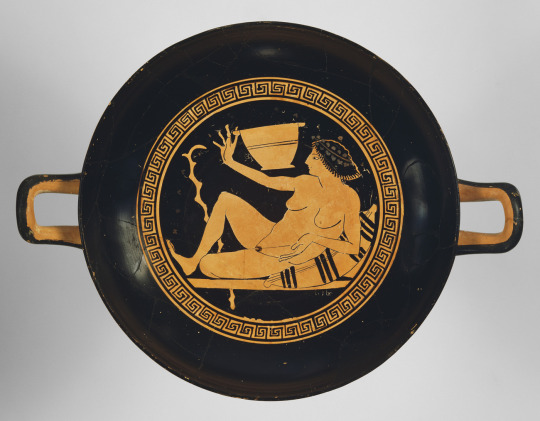
Name of object: Attic Red-Figure Kylix
Approximate Date Created: about 490 B.C
Location Created: Athens, Greece
Material of the object: Terracotta
Dimensions: 8.5 × 36.9 cm
Type: kylix
Current Location: The J. Paul Getty Museum
Significance of the object: This kylix (cup with a shallow bowl and a tall stem), depicts a nude woman lying down on a bed with her left leg bent underneath her right leg. The woman is shown playing kottabos (a drinking game) and she holds a skyphos (drinking cup) with her right hand index finger. According to The J. Paul Getty Museum, since symposiums were events exclusive to men, the women who attended were either hetairai ( a courtesan) or hired prostitutes.
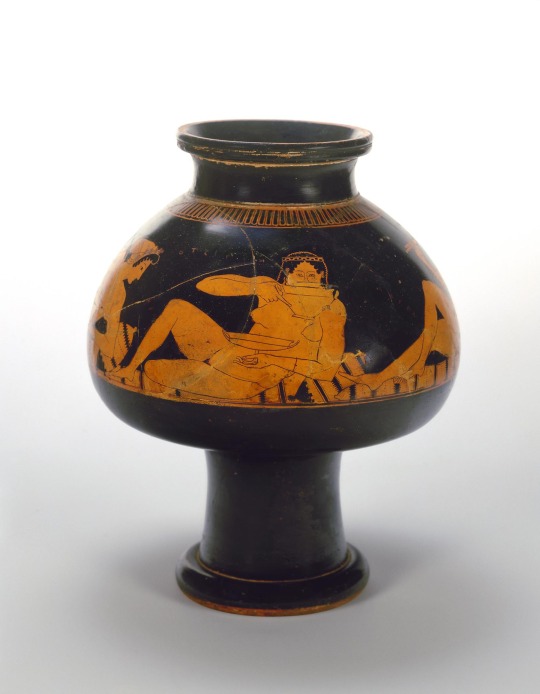
Name of object: Red-figured Psykter: Four Hetaerae
Approximate Date Created: 505-500 B.C.
Location Created: Attica, Greece
Material of the object: Clay
Dimensions: 35.5 cm
Type: Psykter
Current Location: The State Hermitage Museum
Significance of the objet: This Psykter (a vase used as wine cooler), depicts a nude woman who is laying down on a bed and drinking wine. According to The State Hermitage Museum, this vase is the only signed work by Euphronius, a leading Greek vase-painter. On her either side are also two other nude women. Similar to the previous picture, these women are most likely at a symposium and they are either hetaeraes or hired prostitutes for entrainment of men.
In a male dominant society such as ancient Greece where women had many restrictions and limited freedom, depictions of nude women can only mean one thing: they are either courtesans or hired prostitutes. Most of these women are believed to have been slaves or immigrants. In fact, foreign women are almost always discussed as sexual labourers (Kennedy, 2014, p.2). However, remained inscriptions and records indicates that these women also worked as nurses, midwives, woolworkers, musicians, and vendors at markets (Kennedy, 2014, p.3).
“As the Athenians further developed a sense of ethnic and social superiority over the course of the fi fth century, metic women found themselves the victims of a form of ideological warfare. They became the ultimate enemy of the Athenian state and thus found themselves spoken of and represented only as courtesans, concubines, and slaves. But we should not mistake this ideology of the metic woman, this tragic fantasy, for reality. The reality of these women’s lives was probably quite different“
(Kennedy, 2014, p.59)
0 notes
Text
The next Total War game is called Troy: A Total War Saga
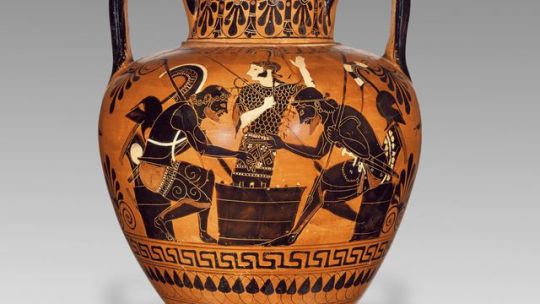
Two Greek warriors sitting down to play a game, from a Greek amphora circa 530-510 B.C. from Athens, Greece. | Photo: Sepia Times/Universal Images Group via Getty Images
The game will be unveiled on Sept. 19
Continue reading…
The next Total War game is called Troy: A Total War Saga published first on https://sixchexus.weebly.com/
0 notes
Text
The next Total War game is called Troy: A Total War Saga
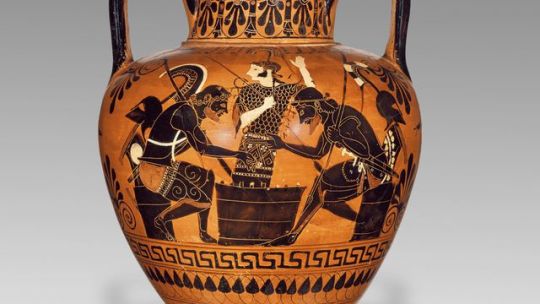
Two Greek warriors sitting down to play a game, from a Greek amphora circa 530-510 B.C. from Athens, Greece. | Photo: Sepia Times/Universal Images Group via Getty Images
The game will be unveiled on Sept. 19
Continue reading…
from Polygon - All https://ift.tt/2O3OmVA
via IFTTT
0 notes
Text
Turn Back The Clocks: Toronto Real Estate In 1914
TorontoRealtyBlog
A client recently sent me an “investment opportunity” that wasn’t quite on the same level as the Real Estate Wealth Expo with your boys Pitbull and Sly Stallone, but close.
Unfortunately, this opportunity expired some time ago.
And by that, I mean over 100-years-ago. Take a look at this sales brochure, circa 1914, both in terms of the way houses were marketed as an “investment,” but also the prices, the history, and the character…
Do you like generalizations?
Because I’m about to give you one…
I surmise that just about everybody who attended the 2018 Real Estate Wealth Expo two weeks ago knows a below-average amount about real estate. And that’s being generous.
I would guess that most of these people, who paid up to $2,500 for their tickets, are the most likely to get taken by any sort of con, scam, or gimmick.
I just don’t understand how anybody can listen to that nonsense, and feel as though they’re not being played for a sucker.
Pitbull? Sylvester Stallone? Alex Rodriguez?
Bright lights, fireworks, confetti, dancers, loud music – this is what helps you make an informed purchase decision in one of the hottest real estate markets on the planet.
But what else should we expect?
A sucker is born every day.
Who in the world hears those incessant radio ads about “making money in real estate, without using your own cash,” and thinks there’s no catch?
Probably the same people who put their “used, broken, and unwanted gold” in an envelope and mail it to a P.O. Box from a television ad, for an indeterminate, un-agreed-upon sum of money in return.
Like I said last week, I could write an entire blog on the Wealth Expo, but I don’t know that it would be productive.
Alas, I only wish we could return to a time when marketing “gimmicks” were simpler, and more honest.
So with that in mind, I’d like to show you something.
It’s a brochure, circa 1914, called “An Investment In Houses.”
And it’s the coolest thing I’ve seen in a long time.
I’m a huge history buff, especially when it comes to local history, hence my love affair with Toronto’s St. Lawrence Market neighbourhood, where I’ve lived for the last 12 years.
So I was like a kid on Christmas morning when a client sent me this:
This is, simply put, the coolest thing I’ve seen in a long time.
And that’s coming from somebody who isn’t all that cool…
This is a brochure introducing a new development in Toronto called “Glebe Manor Estates.”
If the name “Glebe” sounds familiar, it’s because there’s a Glebe Road in the Yonge & Eglinton area. Except we call this area “Yonge & Eglinton,” or “Davisville Village,” or “Mount Pleasant West,” to it’s appropriately-named neighbour, “Mount Pleasant East,” on the other side of, well, Mount Pleasant.
But when the area was first developed in the 1910’s and 1920’s, the name was “Glebe Manor Estates.”
Here’s the map they provided in the brochure:
You might recognize that as the area bordered by Yonge Street, Manor Road, Bayview Avenue, and Millwood Road.
Post World War II, this was nothing but vacant land, with building lots, severed by the Dovercourt Land Building & Savings, who were the “exclusive selling agents” for both lots and houses.
The company had many projects on the go, as evidenced by this awkard attempt at a 3D map of Toronto, taken from the harbour, pointing to their other subdivisions:
They had me at “Largest Owners & Developers of Real Estate In Canada.”
I wonder if that’s like the several hundred Realtors who all claim to be #1?
In any event, the brochure for “Glebe Manor” offered this as the inside leaflet:
How is that for a sales gimmick?
“Exceedingly low prices.”
I wonder if the folks at the Real Estate Wealth Expo would have come to the same conclusion…
And the brochure you see above, some 20-pages, came with this wonderful opening, which I’ll transcribe because the print is so small:
An Introduction To Some Attractive Houses
The houses illustrated on the following pages have recently been built on Glebe Manor Estate.
The property is situated on Yonge Street just north and west of Moore Park District, and a little east of Upper Canada College; within 25 minutes car ride from Queen and Yonge
The illustrations were made from photographs and represent the buildings as they actually appear.
The enclosed plan indicates the artistic way in which Glebe Manor is laid out. Winding streets and Boulevards, Park reservations, an excellent view and pure air, make this property an ideal spot in which to live, affording as it does many of the attractions of country life, with city conveniences. The residences are modern in every detail and the workmanship and material are of the best. If you are in the market for a convenient and attractive home or a safe and profitable investment, one or more of these properties should appeal to you.
The object of this little book is to endeavour to arouse your interest in these little houses some of which are being sold much below their market value. We believe that a little of your time spent looking over some of them will prove very profitable to you. Within the next three months these properties will be quoted at very much higher prices than now asked. The demand for homes in this District will then be at its height. An automobile is at your service. Telephone Main 7281.
–
That’s verbatim, so excuse any grammatical errors.
What I love is this line:
“Within the next three months, these properties will be quoted at very much higher prices than now asked.”
Grammatically awkward, yes. But also the word “quote” as it was used 100 years ago, not to mention the promise of profits.
As for the houses themselves, this is the coolest part.
Each of these houses still stands today, so if you know anybody that lives in them, send them the photo:
–
So what stands out to you the most?
The price?
How about the term itself, “Terms arranged?” An old-world way of discussing financing, and back then, I’m sure the buyer dealt directly with the developer.
How about the “number of rooms?” Nowadays, we only concern ourselves with the number of bedrooms, and the number of bathrooms. Back then, each of these houses likely had one bathroom, so the point was moot.
What does “separate toilet” mean? Is that the lonely toilet in the basement that we see so often in 2018 in these old houses?
I love looking at this old stuff, I get such a kick out of yester-year.
Too many things in life make us feel old, so here’s something that should, at least, make us feel young…
The post Turn Back The Clocks: Toronto Real Estate In 1914 appeared first on Toronto Real Estate Property Sales & Investments | Toronto Realty Blog by David Fleming.
Originated from https://ift.tt/2qFQKVV
0 notes
Link
Winged bull between two floral friezes; #Achaemenid, Palace of Darius I, Susa, #Iran, Circa 510 B.C., Glazed brick. (Louvre Museum) http://pic.twitter.com/VTxLyz0QRs
— انجمن ایرانشناسی (@iranologyscty) July 14, 2017
from Twitter https://twitter.com/iranologyscty
July 14, 2017 at 08:37PM
via IFTTT Winged bull between two floral friezes; #Achaemenid, Palace of Darius I, Susa, #Iran, Circa 510 B.C., Glazed brick.… https://t.co/MWrtioFRg5
0 notes
Text

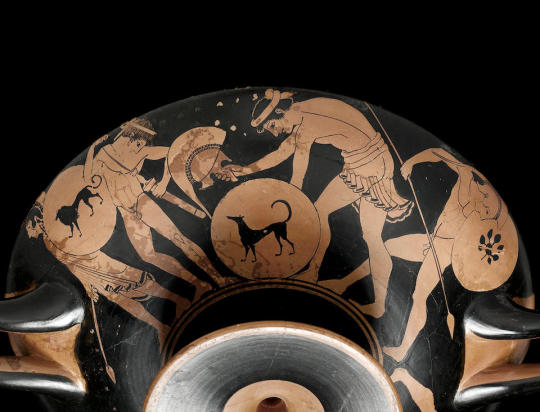


An Attic red-figure 'Kalos' kylix
Circa 510-500 B.C.
#An Attic red-figure 'Kalos' kylix#Circa 510-500 B.C.#pottery#ancient pottery#ancient artifacts#archeology#archeolgst#history#history news#ancient history#ancient culture#ancient civilizations#ancient greece#greek history#greek art#art#ancient art
77 notes
·
View notes
Photo
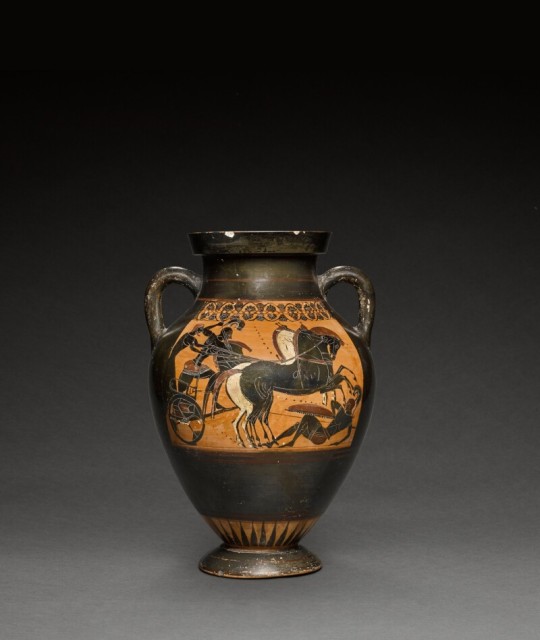
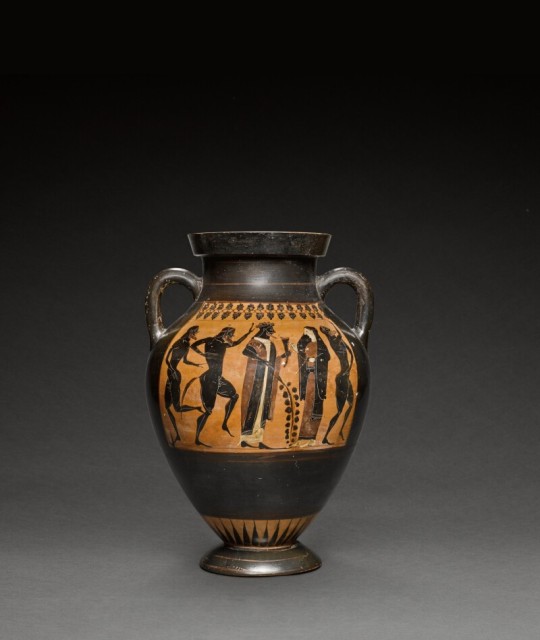
An Attic Black-figured Amphora, attributed to Group E, circa 530-510 B.C.
An Attic Black-figured Amphora
attributed to Group E, circa 530-510 B.C.
Decorated on one side with a warrior riding a quadriga to right and trampling a fallen warrior, his charioteer standing at his side, pseudo inscriptions in the field, a band of double palmette and lotus chain above, and on the other side with Dionysos standing before a veiled woman, holding a drinking horn and ivy branch, and flanked by three dancing satyrs, a band of double palmette chain above, rays above the foot, the details in added red and white, graffiti under the foot.
Height 40.6 cm.
#An Attic Black-figured Amphora attributed to Group E circa 530-510 B.C.#Greek Vase#Ancient Greece#ancient culture#ancient civilizations#ancient history#history news#history#art#artist#art work#art news
11 notes
·
View notes
Text
Winged bull between two floral friezes; #Achaemenid, Palace of Darius I, Susa, #Iran, Circa 510 B.C., Glazed brick.… https://t.co/MWrtioFRg5
Winged bull between two floral friezes; #Achaemenid, Palace of Darius I, Susa, #Iran, Circa 510 B.C., Glazed brick. (Louvre Museum) http://pic.twitter.com/VTxLyz0QRs
— انجمن ایرانشناسی (@iranologyscty) July 14, 2017
from Twitter https://twitter.com/iranologyscty
July 14, 2017 at 08:37PM
via IFTTT
0 notes